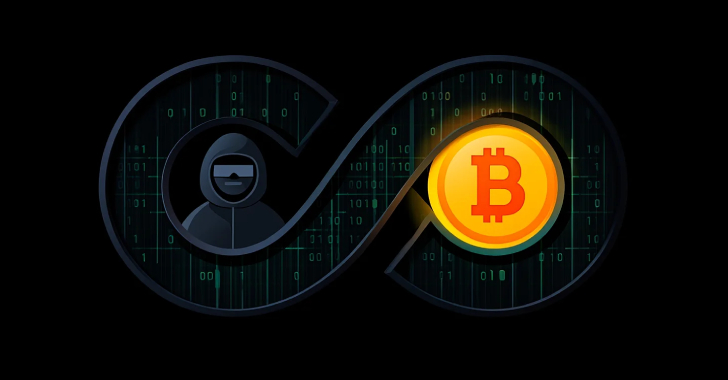
What Is GRC (Governance, Risk, Compliance)?
In today’s complex and rapidly evolving business landscape, organizations must navigate a multitude of challenges to ensure their long-term success. Among these challenges, Governance, Risk Management, and Compliance, collectively known as GRC, have emerged as critical pillars for achieving stability, transparency, and legal adherence. This article delves into the world of GRC, explaining what it encompasses, why it matters, and how it helps organizations thrive in an increasingly regulated world.
Defining GRC
Governance, Risk, and Compliance (GRC) is a comprehensive framework that organizations use to manage and align their various functions, ensuring that they operate efficiently, responsibly, and within legal boundaries. Let’s break down these three components:
- Governance:
Governance refers to the system of rules, processes, and practices that an organization uses to direct and control its activities. It sets the framework for decision-making and establishes accountability within the organization’s structure. In essence, governance ensures that an organization’s objectives are met, risks are managed, and compliance is maintained.
Key aspects of governance:
Board of Directors: The board plays a crucial role in governance by providing oversight, making strategic decisions, and holding executive management accountable.
Policies and Procedures: Well-defined policies and procedures are established to guide the organization’s operations and ensure that they are carried out in a consistent and compliant manner.
Accountability: A strong governance structure ensures that individuals within the organization are held accountable for their actions and decisions.
- Risk Management:
Risk management is the process of identifying, assessing, and mitigating potential risks that could impact an organization’s ability to achieve its objectives. These risks can vary widely, from financial and operational risks to reputational and cybersecurity risks. Effective risk management seeks to strike a balance between risk-taking and risk avoidance.
Key aspects of risk management:
Risk Identification: Organizations must identify both internal and external risks that could affect their operations. This includes risks related to market dynamics, technology, competition, and more.
Risk Assessment: Once identified, risks are assessed based on their potential impact and likelihood. This assessment helps prioritize which risks require immediate attention.
Risk Mitigation: Strategies and actions are developed to mitigate or manage identified risks. This might involve implementing security measures, diversifying investments, or developing contingency plans.
- Compliance:
Compliance involves adhering to the various laws, regulations, standards, and industry-specific requirements that apply to an organization’s operations. Non-compliance can lead to legal troubles, fines, damage to reputation, and other adverse consequences.
Key aspects of compliance:
Legal and Regulatory Compliance: This includes following local, national, and international laws, as well as industry-specific regulations. For example, financial institutions must comply with banking regulations, while healthcare organizations must adhere to healthcare laws.
Ethical Standards: Compliance also extends to ethical standards and best practices. Organizations often have codes of conduct and ethical guidelines that employees must follow.
Data Protection and Privacy: With the increasing importance of data, compliance with data protection and privacy laws, such as GDPR or HIPAA, is crucial to avoid data breaches and legal penalties.
Why GRC Matters
GRC is not just a buzzword; it’s a fundamental framework for the success and sustainability of organizations. Here’s why it matters:
- Risk Mitigation:
By systematically identifying, assessing, and managing risks, GRC helps organizations avoid potential pitfalls. It enables proactive decision-making and the implementation of risk-mitigation strategies, ultimately reducing the likelihood of financial losses and reputational damage.
- Legal and Regulatory Adherence:
In an era of increasing regulatory scrutiny, compliance is non-negotiable. GRC ensures that organizations stay on the right side of the law, reducing the risk of fines, lawsuits, and other legal consequences.
- Improved Decision-Making:
Strong governance structures established through GRC facilitate better decision-making processes. By defining roles and responsibilities, ensuring accountability, and fostering transparency, GRC enables organizations to make informed and strategic choices.
- Enhanced Reputation:
Compliance with ethical standards and best practices not only helps avoid scandals but also enhances an organization’s reputation. Customers, investors, and partners are more likely to trust and engage with an organization that demonstrates its commitment to responsible conduct.
- Efficiency and Cost Reduction:
GRC streamlines processes by eliminating redundant or inefficient practices. It reduces the cost of compliance by creating a centralized framework for managing compliance requirements, reducing duplication of efforts.
- Competitive Advantage:
Organizations that excel in GRC are often more competitive. They can adapt to changing regulations more swiftly, respond effectively to emerging risks, and position themselves as reliable partners or service providers.
Implementing GRC:
Implementing GRC effectively involves a strategic and systematic approach. Here are the key steps:
- Assessment:
Begin by assessing your organization’s current state of governance, risk management, and compliance. Identify strengths, weaknesses, and areas that require improvement.
- Define Objectives:
Set clear and measurable objectives for your GRC program. What do you want to achieve in terms of governance, risk management, and compliance? Define your goals.
- Governance Structure:
Establish a governance structure that includes a board of directors or a governance committee responsible for overseeing GRC efforts. Clarify roles, responsibilities, and reporting lines.
- Risk Assessment:
Identify and assess the risks your organization faces. Prioritize them based on potential impact and likelihood. Develop a risk register to track and manage risks.
- Compliance Framework:
Create a compliance framework that outlines the specific laws, regulations, and standards applicable to your organization. Develop policies and procedures to ensure compliance.
- Technology and Tools:
Consider GRC software and tools that can streamline and automate various aspects of GRC, such as risk assessment, compliance tracking, and reporting.
- Training and Communication:
Ensure that employees are trained on GRC policies and procedures. Communication is key to fostering a culture of compliance and risk awareness.
- Monitoring and Reporting:
Implement monitoring mechanisms to track compliance and risk management activities. Regularly report to the board and executive management on the status of GRC efforts.
- Continuous Improvement:
GRC is an ongoing process. Continuously review and update your GRC framework to adapt to changing risks, regulations, and organizational needs.
Challenges in GRC:
While GRC offers numerous benefits, it also comes with its fair share of challenges:
- Complexity:
GRC can be highly complex, especially for large organizations operating in multiple regions and industries. Managing diverse compliance requirements and risks can be daunting.
- Resource Intensive:
Effective GRC requires dedicated resources, including personnel, technology, and financial investments. Smaller organizations may struggle to allocate these resources.
- Resistance to Change:
Implementing GRC often requires changes in organizational culture and processes. Resistance to these changes can impede progress.
- Rapidly Changing Regulations:
Regulations are not static. They evolve over time, and organizations must stay agile to adapt to new compliance requirements.
Conclusion
Governance, Risk, and Compliance (GRC) is a holistic framework that enables organizations to navigate the complex landscape of modern business. By establishing strong governance structures, managing risks proactively, and ensuring compliance with laws and regulations, organizations can enhance their reputation, reduce financial risks, and improve decision-making. While GRC implementation may pose challenges, its benefits far outweigh the costs, making it an essential component of sustainable and responsible business practices in today’s world. As regulations continue to evolve, GRC will remain a vital tool for organizations striving for long-term success and stability.
Contact Cyber Defense Advisors to learn more about our Governance Risk Compliance (GRC) solutions.





